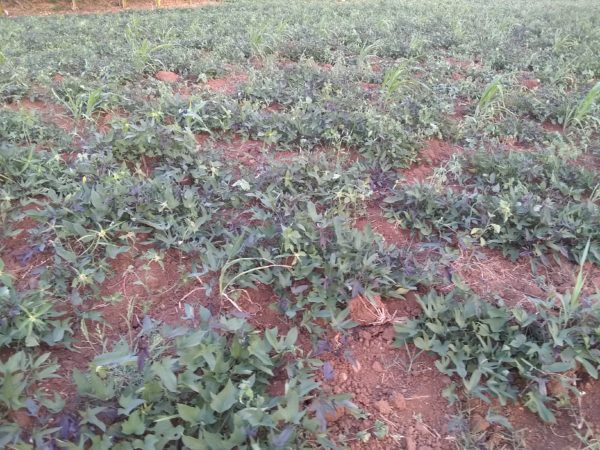Intense Drought Makes Life Harder in Mayari, Cuba
By Osmel Ramirez Alvarez

HAVANA TIMES – It was around January 20th the last time it rained here in Mayari, in Cuba’s eastern province of Holguin. This was one of two downpours that barely fell here this year. That is to say, 2021 not only gave us economic reforms with exorbitant prices out of anyone’s pocket, but it’s also come with weather that’s harsh for our agriculture.
People’s hopes of getting food lie in our fields, now more than ever. Nobody goes to the independent sellers’ stalls, nor to the state-led agro-market, to buy what they need because they’re empty. Just one or two years ago, they were full of meat hanging on metal hooks, strings of garlic and onions, plantain and cassava on sale because there was plenty for sale, but now there’s nothing.
Just as it was in the 1990s, those Cubans that can have gone back to the fields. They visit farmers to see what they can “resolve”. The hope is to supplement the little they buy through the ration booklet. Getting this is a lot more viable through bartering. This has led to a super demand for agricultural produce.
However, intense drought has helped reforms to make life really hard. At least here in eastern Cuba. Lots of harvests are being lost or yields are a lot less than they could be. In the Mayari valley, land is very fertile and the winter season (October-February) is a lot more promising, but it is in its final phase now after scarce rains in January, and without the precision needed to really benefit crop growth.
Nope, not even Nature knows what we need. We humans are the ones trying to adapt to its cycles, which are not exact at all of course. Irrigation is a way to minimize its effects.
But even though there is plenty of underground water, and there is a fast-flowing river with four streams and other brooks that run all through our valley, we’re still in need of this precious liquid. A great dam was built in the neighboring mountains and it’s on the border of our productive areas, which could be irrigated in serious situations, but it isn’t allowed.
You could think that it’s absolute madness then, that this drought is causing losses. Millions were spent to make the dam and water is right there. However, the government says that they don’t have the resources to put in conductors or to buy pumps that allow us to use the river and well water.
Making it a greater tragedy, the State’s heavily bureaucratic and politicized system has diverted water for investments where there is no manual labor, where energy needs to be used to distribute water and the soil is a lot less productive. Leaving much of this rich valley without any access to water. The benefits of bureaucracy!
It’s really sad now to see sweet potato crops affected by Tetuan (pest) and smaller ones not being able to grow because of the drought. Cassava plants in need of a downpour in order to grow and bean plants giving very little, some 15-20% of their per hectare potential.
However, this will help inflation grow, since little food is being imported and famers don’t have what they need for optimal production. Where things don’t work properly, it’s up to luck that Nature helps us to make a difference and give us a little bit of respite in life. But we haven’t even been able to rely on that this year, because the drought is really bad.






Comments are closed.